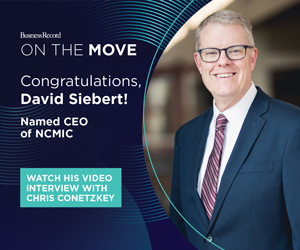Another convert to master limited partnerships

.floatimg-left-hort { float:left; } .floatimg-left-caption-hort { float:left; margin-bottom:10px; width:300px; margin-right:10px; clear:left;} .floatimg-left-vert { float:left; margin-top:10px; margin-right:15px; width:200px;} .floatimg-left-caption-vert { float:left; margin-right:10px; margin-bottom:10px; font-size: 12px; width:200px;} .floatimg-right-hort { float:right; margin-top:10px; margin-left:10px; margin-bottom:10px; width: 300px;} .floatimg-right-caption-hort { float:left; margin-right:10px; margin-bottom:10px; width: 300px; font-size: 12px; } .floatimg-right-vert { float:right; margin-top:10px; margin-left:10px; margin-bottom:10px; width: 200px;} .floatimg-right-caption-vert { float:left; margin-right:10px; margin-bottom:10px; width: 200px; font-size: 12px; } .floatimgright-sidebar { float:right; margin-top:10px; margin-left:10px; margin-bottom:10px; width: 200px; border-top-style: double; border-top-color: black; border-bottom-style: double; border-bottom-color: black;} .floatimgright-sidebar p { line-height: 115%; text-indent: 10px; } .floatimgright-sidebar h4 { font-variant:small-caps; } .pullquote { float:right; margin-top:10px; margin-left:10px; margin-bottom:10px; width: 150px; background: url(http://www.dmbusinessdaily.com/DAILY/editorial/extras/closequote.gif) no-repeat bottom right !important ; line-height: 150%; font-size: 125%; border-top: 1px solid; border-bottom: 1px solid;} .floatvidleft { float:left; margin-bottom:10px; width:325px; margin-right:10px; clear:left;} .floatvidright { float:right; margin-bottom:10px; width:325px; margin-right:10px; clear:left;} Dear Mr. Berko:
I’ve been reading your column for more than 30 years, and on many occasions I noted that you recommended master limited partnerships (MLPs). I never bought one, because my brokers and I believed they were fly-by-night companies, and that you should be put in a straitjacket for recommending those things. Now I have a new broker, and he thinks that oil and gas MLPs make good sense for income and growth. Now they make good sense to me. Of course, I don’t remember your recommendations, but could you go back among those recommendations and select one issue for a $5,000 investment?
T.P., Fort Walton Beach, Fla.
Dear T.P.:
Well, it seems that you’ve had a cognitive epiphany.
I like oil and gas pipeline master limited partnerships and have been recommending them for 15 years. I’ve recommended dozens, some of which have merged into others, most of which have consistently increased their dividends, and most of which are significantly higher in price than when they appeared in this column.
Rather than tout one that was profiled earlier, I’ll recommend Penn Virginia Resource Partners LP (PVR-$24.08), which should generate $854 million in revenues in 2010 from its 4,000 miles of pipeline. This year, PVR will generate about $150 million in revenues from its coal properties — it owns about 875 million tons of coal reserves — which are leased to third-party operators in exchange for royalty payment. But PVR expects to generate more than $700 million by moving natural gas from the well to the processor and then to the consumer. It’s PVR’s natural gas revenues that richly resonate in my cerebral cortex. Here’s why — and please don’t tell this to ex-V.P. Al Gore: Last year, natural gas heated 50 percent of America’s homes and generated more than 21 percent of the nation’s electricity. By comparison, coal generated 49 percent of our electrical power, and in the coming years coal will become the resource of last resort. So natural gas is in the batter’s box, anxious to step up to the energy plate and hit a multibillion-watt home run.
There are now 850 gas rigs working feverishly to bring those fumes to the surface, and in the next nine months that number could increase to 920.
Meanwhile, Exxon Mobil (XON) is pumping billions of cubic feet of natural gas and last December spent $41 billion to purchase XTO Energy. XTO Energy owns 14 trillion feet of proven natural gas reserves, plus trillions of cubic feet of probable but unproven reserves. This XON/XTO deal reflects the long-term view that natural gas will be the fastest-growing fuel over the next 30-40 years, which is why I feel strongly about Penn Virginia Resource. The higher the demand for gas, the more money PVR earns, and I think it is going to earn a lot of money during the next decade.
PVR’s gas revenues currently derive from Texas and Oklahoma. But now that the Marcellus shale region is growing at a pace few analysts predicted, this Radnor, Pa., firm is going to set its growth and acquisition sights on its own back yard. And as you know, it doesn’t matter much what the price of natural gas sells for — rather, it’s how much of the stuff PVR can move through its pipelines.
PVR’s revenues have grown fivefold since its 2002 IPO; its price has doubled; and the dividend has risen from 92 cents per share to $1.88. The dividend yields 7.8 percent, and because of the company’s unique MLP status, just 15 percent of that $1.88, or 28 cents, is treated as taxable income. So if you’re in the 35 percent tax bracket, your net after-tax income would be $1.78, or 7.4 percent, and that lights my corncob. And better than lighting my pipe (I use butane), I think PVR should do well in the coming eight years, as it did in the previous eight years.
Please address your financial questions to Malcolm Berko, P.O. Box 8303, Largo, Fla. 33775 or e-mail him at mjberko@yahoo.com. © 2010 Creators.Com






